It’s that time of year again. As the traditional family games are being dusted off , you can almost predict that only one person will enjoy the 3 hour slog of dice rolling and slow player elimination. But fear not, Christmas can be saved! The elves at Hexagorgon have compiled a definitely-not-naughty list of family games and their personal tips on how best to enjoy them.
There are quite a few recommendations, so to help you narrow down your perfect family game, we’ve split them into the following categories:
Quick and quippy – These family games are quick to pick up and play; everyone can get involved!
Lying to your loved ones – Games that have an element of deception.
Teamwork makes the dream work – Ramp up the competitiveness by splitting your loved ones into teams!
Games with a board?! – An unusual concept, but these family games are mostly centred around a square piece of cardboard…
Showing off your artistic flair (or not) – Games that require no artistic talent to play, but still involve the use of a pen.
[adinserter block=”1″]
Quick and quippy
These family games are quick to learn, easy to play and a great laugh for all:
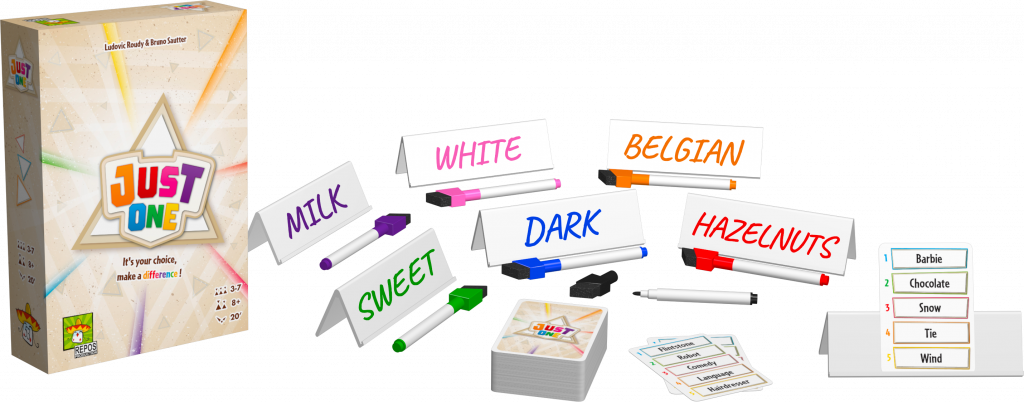
Just One
3-8 Players ⬢ Word Game ⬢ Easy to learn ⬢ Quick to play ⬢ Cooperative
What: Just One has one player, guessing one word, using one-word clues, one from each of the other players, which must also be one of a kind!
How it brings good cheer: As a cooperative game, Just One requires you to work as a team and understand your teammates in order to give the best clues possible. The simplicity of the game will lead your group into a deeper level of thought than they realise, making it a great way to draw together a varied group. The dynamic of the game comes from understanding the players, and as long as you are trying, there is no way to play the game poorly.
This one’s a Hexagorgon favourite that we often play together!
Serving suggestion: Teach as you play and be lenient with any ambiguous rules until everyone has played a few games. This is a great game to be playing as people are arriving; until you get above 8 people you can add players as they turn up!
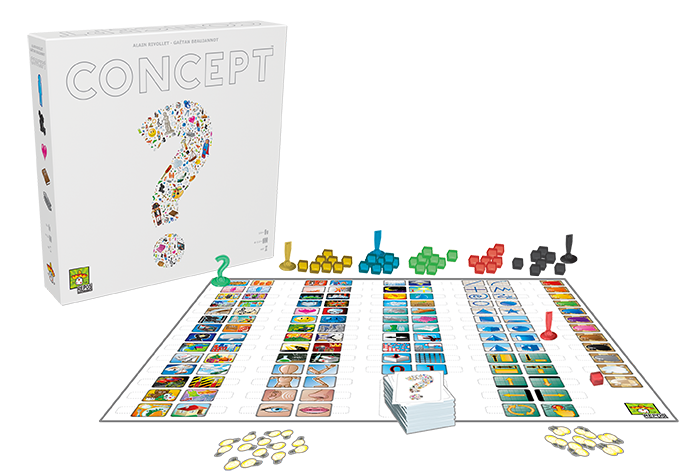
Concept
3-12 Players ⬢ Word Game ⬢ Easy to learn ⬢ Quick to play ⬢ Semi-cooperative
What: Concept has similar vibes to traditional parlour games (such as Charades) in that one player uses a wide-yet-limited array of clues to help everyone else guess a specific thing. In Concept, this is done by placing different coloured cubes down on a selection of pictures, while the remaining players try to figure out what they mean, and how they’re all connected.
How it brings good cheer: Concept feels like a more traditional game, making it an easy segue for groups who aren’t so familiar with modern board games. The gameplay is naturally cooperative, encouraging players to support one another when clues don’t work out, and will build a sense of collaboration and togetherness if your group is open to it.
Serving suggestion: Concept technically has a scoring system, though unless you need competition in your games, you can easily do away with scores and just play until you want to move on. Whilst there is still some pride in being the one who gets the correct answer, it removes any negative feelings around ‘stealing’ someone else’s point by building off their answer.
The rules also recommend playing with two clue-givers, but I generally play with only one. It makes the clues more personal, but you still have the option of roping in another player to help with the clues if you are really stumped.
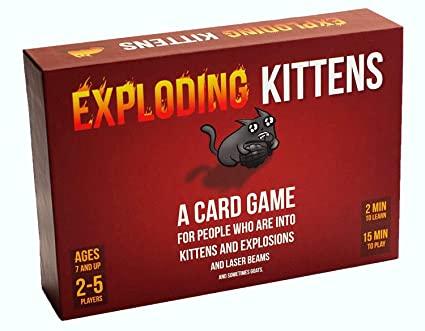
Exploding Kittens
2-5 Players ⬢ Card Game ⬢ Easy to explain ⬢ Quick to play ⬢ Small size ⬢ Competitive
What: Exploding Kittens is a pure card game themed around Kittens that may or may not Explode. Use all the cats at your disposal to make sure you are the last one to explode!
How it brings good cheer: Aside from the theming, Exploding Kittens is a game which doesn’t require much strategy to master. Though it is heavily luck driven, it’s set up to keep most players in the round for as long as possible. The takeaway feeling is the escalating back-and-forth “I don’t think so!” laughing match which occurs at the end of the game, as the last couple of players are desperately trying not to draw the last card of the deck (which they both know is an Exploding Kitten).
Serving suggestion: Sometimes the correct move is playing cards not to win, but to increase the tension and make the other players nervous. Also the art is aggressively wacky.
[adinserter block=”1″]
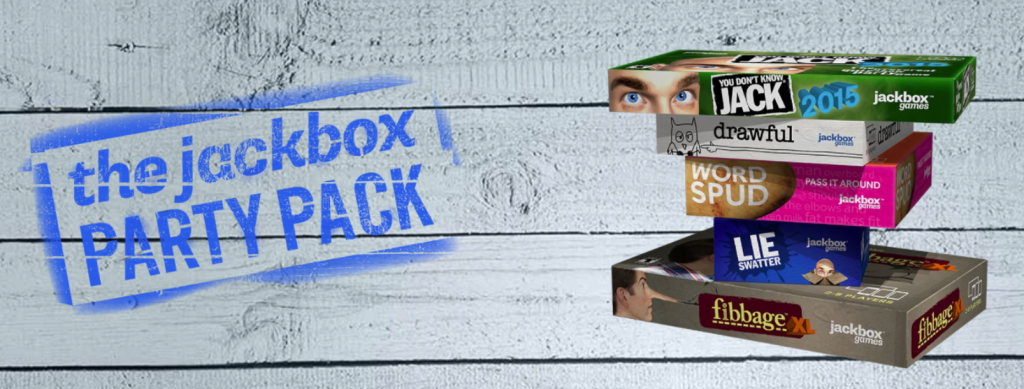
Jackbox
3-8 Players ⬢ Group video games ⬢ Easy to learn ⬢ Quick to play ⬢ Play on your phone
What: The Jackbox Party Packs (there are seven of them!) are party games played on your phone (you will need one computer/console to host them). They are heavily steeped in humour and often involve making jokes or silly scenarios, though many of them also allow you to play it straight and do just as well!
With over thirty games amongst their seven packs, there’s something for everyone in there!
How it brings good cheer: Everything’s made up and the points don’t matter! The games are designed to bring out the sillier side of things, with even the more serious games leaving things open to a touch of the ridiculous. Though every game has a winner, the games never feel like they are about winning. Whether you need something to kick-off and loosen the crowd, or you want something to wind down with for the evening, Jackbox is always welcome in a group setting.
Serving suggestion: You play using your smartphones, so perhaps avoid trying this with people who are totally unfamiliar with modern tech. Otherwise, you’ve got to be a real grumpy-guts to not enjoy some Jackbox!
There’s a lot of variety, and different games suit different crowds. Drawful 2 and Jackbox Party Pack 7 have a ton of variety and are easy to get into, so consider starting there!
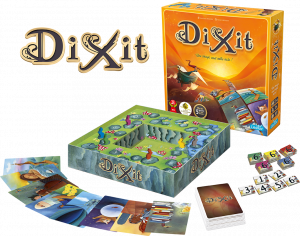
Dixit
3-6 Players (3-12 with Dixit Odyssey) ⬢ Great art ⬢ Easy to learn
What: Put one of your art cards face down and say whatever you like. Everyone else adds a card to try to fool the other players. Then, out of all the pictures, they try to guess which your original card was. You want to come up with vague but meaningful hints, so that somebody – but not everybody – guesses correctly.
How it brings good cheer: Making fun references, gently misleading your friends and looking at beautiful, surreal art! It’s easy to start, easy to drop in or out of, and you can play for exactly as long as you want if you ignore the points.
Serving suggestion: Give everyone a hand of cards, slam down a card with a hint, and get playing! People will usually understand most of the rules once they’ve played a single turn. If it’s a hit, start getting expansions (which provide more art cards)!
Lying to your loved ones
If bluffing and deceit are more your thing, check out these deception-based family games:
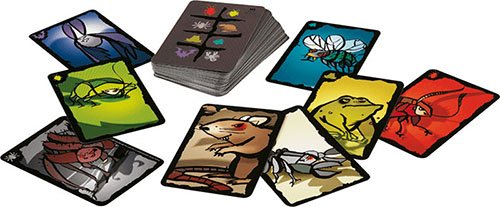
Cockroach Poker
3-6 Players ⬢ Bluffing game ⬢ Competitive
What: Players pass around creepy crawly cards while making claims (truthful or otherwise) about what they are. When you receive a card, you can bet on whether the claim is true or not, or look at it and make a claim to the next player. The loser of the bet keeps the card, and when one player has too many creepy crawlies, they lose!
How it brings good cheer: The game creates so many fun bluffing moments. One person passes a card to another, who looks at it and confirms, they both say it confidently… They were both lying; you feel like a fool. The games are fast and there’s only ever one loser, meaning it’s very easy to reshuffle and play again and losing doesn’t feel bad because everyone’s having fun.
Serving suggestion: Cockroach Poker Royal (sold under its German name Kackerlakenpoker Royal) is a newer printing that swaps one of the suits for ‘royal cards’. I’ve found that this version is a bit faster as the royal cards are also cards of their original suit, adding to the bluff potential of the next player. If you were going to pick one of the two for your collection I’d recommend the Royal version over the regular version, but both work well.
[adinserter block=”1″]
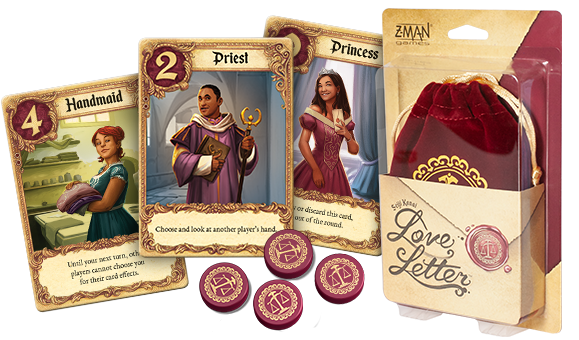
Love Letter
2-4 Players ⬢ Deduction game ⬢ Quick to play ⬢ Rules summary on one card ⬢ You get to call everyone “Princess” ⬢ Small size ⬢ Competitive
What: Love Letter is Guess Who with power-ups. In Love Letter, you’re attempting to ‘court the Princess’ with your letters of love, by getting your letter into the hands of the person closest to the Princess. However, if any of the other players discover who has your letter, they will immediately confiscate it!
How it brings good cheer: A very light-hearted game with quick rounds which doesn’t leave enough time for hard feelings to develop. When someone gets you out, it’s usually by a good guess rather than poor play, so the excitement of the action is the overwhelming feeling you will remember.
Each round lasts a few minutes at most (and each turn only a few seconds), so you’re never waiting around for long!
Serving suggestion: “Do not play with knaves who cheat at fun light-hearted games” – Love Letter rule book

Skull
3-6 Players ⬢ Bluffing game ⬢ Competitive ⬢ Spooky art
What: Skull is a simple but visually stunning bluffing game. Each player starts with 4 disks – 3 flowers and one skull. Players play disks face down until somebody makes a bid, suggesting they could flip over a number of disks without finding a skull. Other players can raise the bid or sit out, and once nobody wants to raise, the winning bid has to pull it off! If they do, they get a point, and only two points wins the game! If they fail, they lose a disk.
How it brings good cheer: The game looks very pretty with its sugar skulls, and often entices people to join in from the design alone. After a demo round, people learn the game quickly in my experience.
Serving suggestion: Although the game says 3-6, I’ve found it’s best with 4 – 6 players: otherwise there’s often too little good bluffing to be done.
Teamwork makes the dream work
Divide your loved ones into groups for these team-based family games:
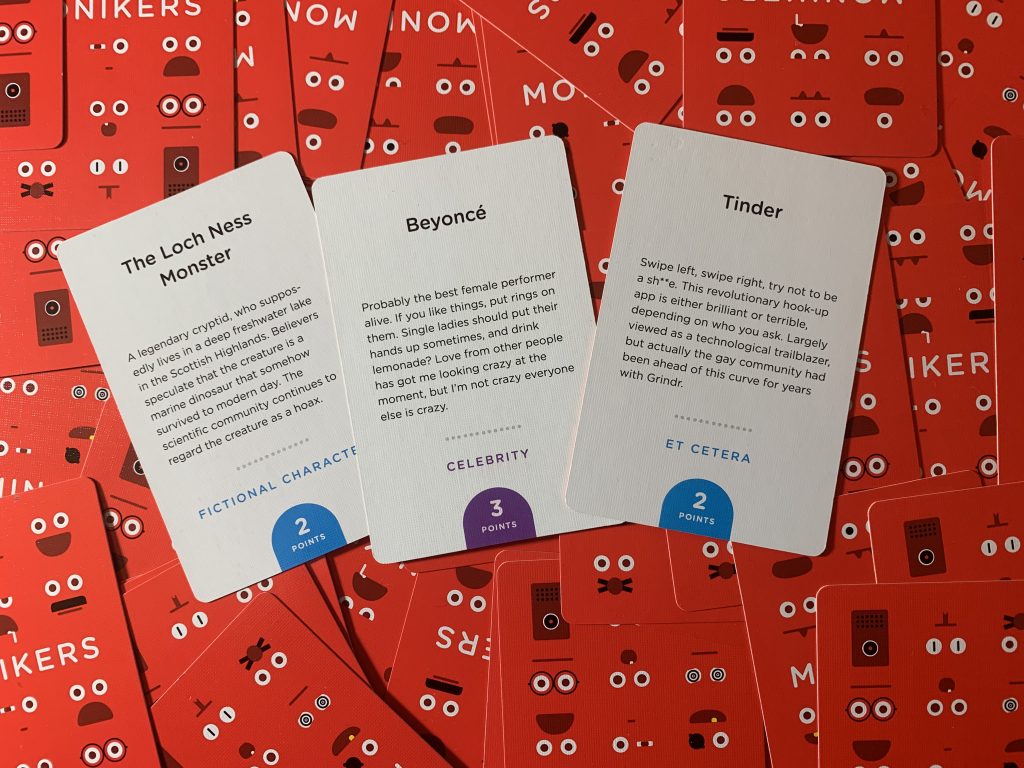
Monikers
2+ Players ⬢ Revitalised charades ⬢ Team game
What: The love child of Articulate and Charades.
How it brings good cheer: A silly game that brings the humour and silliness of an uncle trying to act out Kate Bush without the awkwardness of no one younger than thirty knowing who Kate Bush is.
By keeping the same set of cards throughout each of the game’s three rounds, the final round is more of a memory/connection game, as you have had two rounds of finding out who or what each card is. A true spark of genius.
Serving suggestion: Although you can play by splitting into two teams, the game can simply be played as an activity, removing the competitive aspect. One of the main obstacles to my extended family’s trying new games is a fear of losing or letting team members down, which Monikers dodges.

Wavelength
2+ Players ⬢ Team game ⬢ Easy to pick up ⬢ Get an insight into your loved ones’ psyches
What: Wavelength is a game of reading your team’s mind and hoping you’re on the same, well, wavelength! You’re given two things which sit on opposite ends of a spectrum, like light and dark, hot and cold, fad or classic. The psychic has to come up with a word that they hope will help their team guess where the big points are on the Price-is-Right-style wheel.
How it brings good cheer: It’s a simple game that gets the conversation flowing. The game itself is very well presented and if you are up for it, you can make family game time into more of a game show.
Serving suggestion: As with all party games, the more the merrier. When it’s not your team’s go, you can also sow discord among the opposing team by giving unhelpful suggestions.
[adinserter block=”1″]
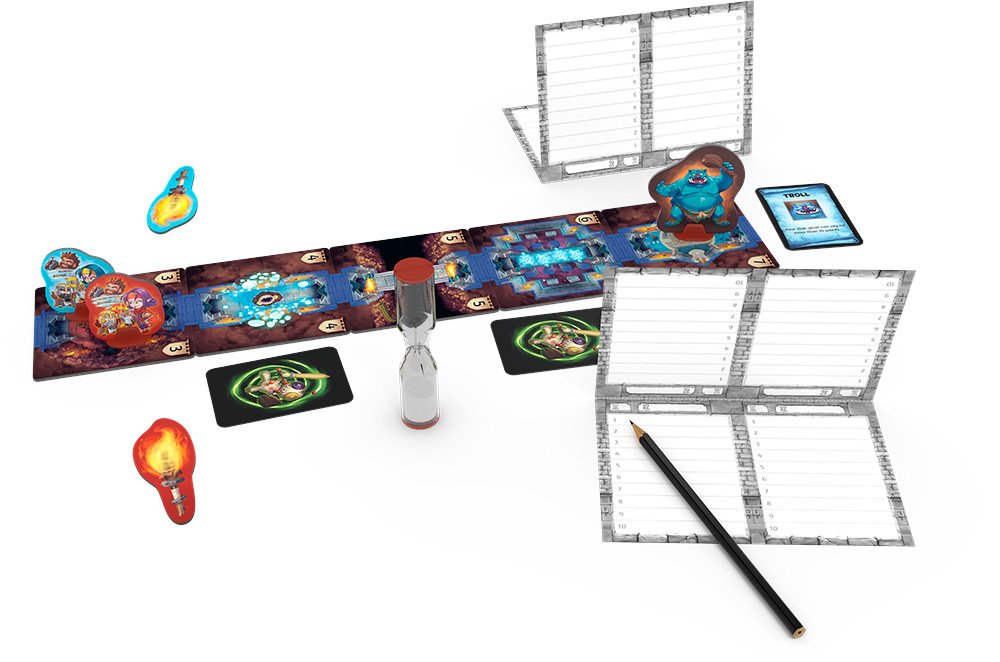
Trapwords
4-8 Players ⬢ Word game ⬢ Easy to learn ⬢ Deeper than it seems ⬢ Little-to-no downtime ⬢ Team game
What: Trap Words is the evolution of Taboo (which is the evolution of Articulate). Each turn, one player will be given a word to describe to their team; meanwhile, the other team will have written a list of words which they must not include. The twist? The describing player can’t see that list.
Do you avoid the obvious words because surely they would have written THAT? Or have they avoided the obvious words because they’re so obvious, surely you’d avoid THAT anyway?
How it brings good cheer: Even when you get ‘trapped’, it’s usually more entertaining than annoying. The game makes things harder for the team that’s ahead, and you’ll learn what your opponents think about you and gradually learn how to avoid their traps.
The dynamic between players is the exciting part of this game: you’ll be guessing what the other team will write/say, and more often than not, second-guessing yourself!
Serving suggestion: Don’t take it too seriously, and don’t overthink it. It’s very easy to spend a lot of time trying to figure out the perfect set of traps, but the game flows a lot better and will see significantly more plays if you go with your gut and keep the game moving.
While both teams are writing their traps this doesn’t matter too much, but once one team has finished their traps the other team should try to wrap up shortly. Don’t force this rule, but making it a polite suggestion – perhaps setting the example yourself – will keep the game flowing without feeling rushed.
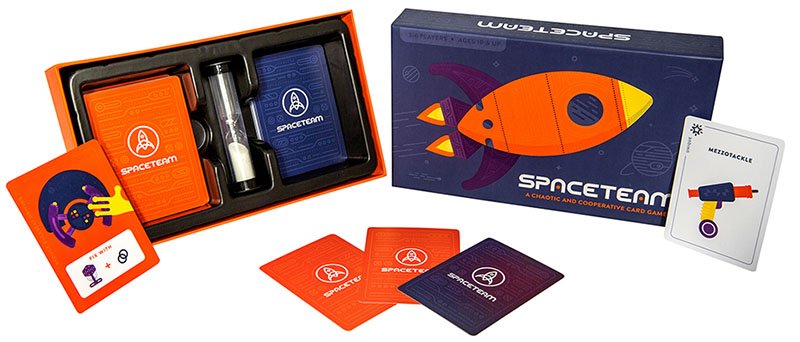
Spaceteam
3-6 Players ⬢ Quick to play ⬢ Cooperative ⬢ Realtime ⬢ Kobayashi Maru-ish
What: A cooperative game of trying to repair your spaceship with limited tools, against the clock. Each player has a stack of ‘malfunctions’ to clear before the spaceship can proceed. However, the instructions might show a picture of the tool, or just its name. All players have a stack of unique tools that must be passed between players to solve malfunctions. But everyone has malfunctions to solve, and there are no turns, just shouting!
How it brings good cheer: You have work together to solve a variety of ridiculous problems with even more improbable tools. It’s loud, fast and exhausting: you will succeed or explode as a team.
With scalable difficulty, it works well for both experienced groups and newcomers, although it does require some encouragement to get people to call out their requests over each other.
Serving suggestion: I recommend curating the deck to include the more interesting Anomaly cards. These require players to stop what they are doing to solve an immediate problem or to play the remainder of the game with a new rule (e.g. all players must change seats).
The Spaceteam website has some some cool .mp3 timers which beat the old alarm on the phone for theming. If you are playing with a smaller group of players, all with smartphones or tablets, then the original app (which the game is based on) is also worth a look.
Games with a board?!
These family games will require a flat surface on which to place a new-fangled invention: The Board Game Board™:
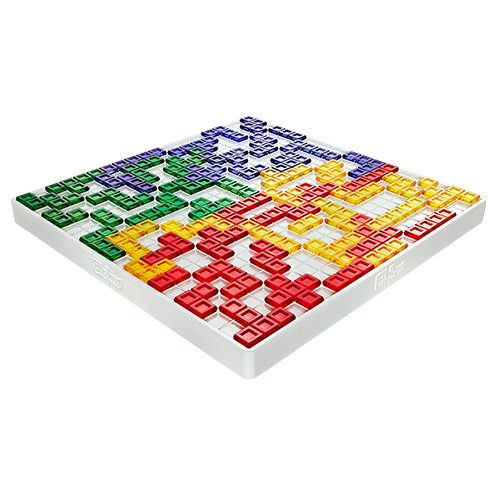
Blockus
2-4 Players ⬢ Tile-laying game ⬢ Easy to explain ⬢ Quick to play ⬢ Small size ⬢ Deeper gameplay than apparent ⬢ Competitive
What: Blockus is a bit like competitive Tetris. Each player attempts to play as many of their pieces as possible whilst also trying to prevent the other players from playing as many of their pieces as possible. The player with the fewest pieces left wins!
How it brings good cheer: Everyone can place down shapes, and the bright colours help it to feel like you’re creating a mosaic despite the competitive nature of the game. The game is self-balancing, in that if one player appears to be doing rather well for themselves, the other players will (or at least should) invade their space and naturally level out the playing field.
It’s difficult to tell who is going to win until the last few turns of the game, so provided you don’t have any sore losers, nobody is sitting out for very long.
Serving suggestion: Blockus is a competitive game (and a very pure competitive game at that) so you should consider what your group enjoys about games before bringing out Blockus. If they enjoy some low-stakes competition, then Blockus could be a winner!
[adinserter block=”1″]
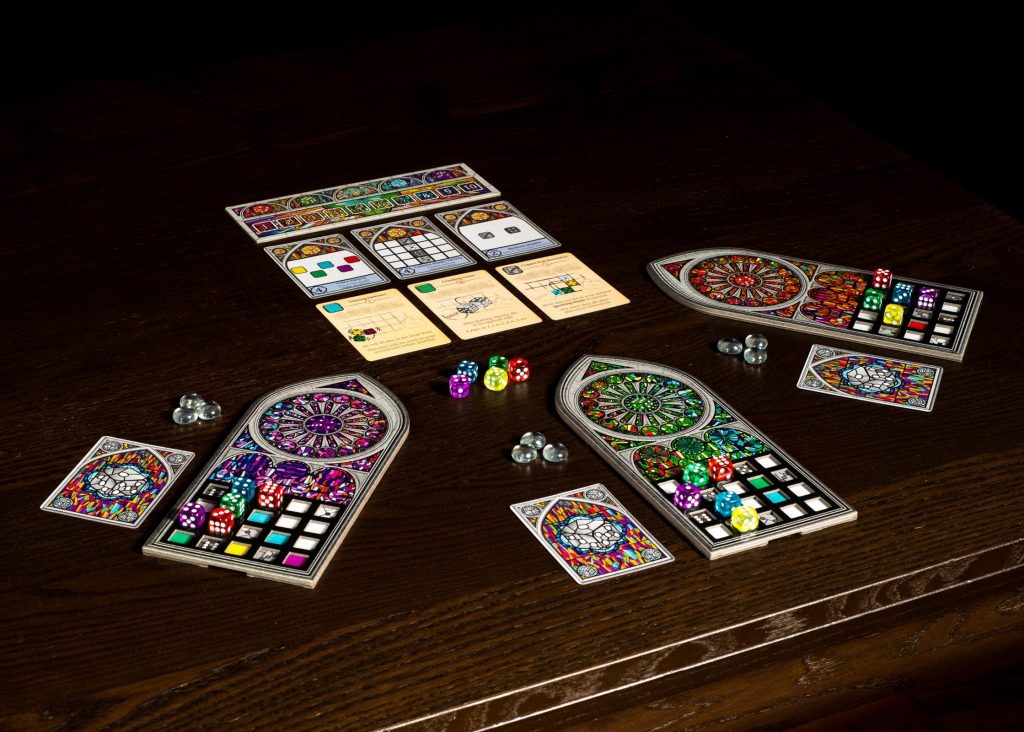
Sagrada
1-4 Players ⬢ Modular expansions ⬢ Aesthetic ⬢ Low-level competitive ⬢ Turn-based ⬢ Drafting
What: Essentially, Sagrada is a game about making pretty patterns with dice. You get a great big bag of them in six colours and take it in turns to place them into your grid, following simple placement rules. Randomised decks of tools and techniques ensure replayability. There’s even a mechanic to fix placement mishaps that’s neatly tied to the difficulty rating of your chosen pattern.
If the sack of multicoloured dice hasn’t sold it to you, the theming is also charming: players take on the role of artists competing to design the most beautiful stained-glass window for the Sagrada Familia. Sagrada has bags of flavour, which helps to disguise the fact that it’s also introducing your family to the drafting mechanic.
How it brings good cheer: Sagrada is glorious to behold. Possibly not as impressive as visiting the real thing, but most of us won’t be spending Christmas in Barcelona.
It’s sometimes possible to force another player to take a die they can’t play, but rarely profitable: the focus is very much on creating the best possible version of your own window.
Serving suggestion: This is that rare game with a two-player experience that’s arguably better than a full house. Find a table out of reach of wagging tails and sticky fingers, and enjoy some quality time with a loved one. Reassure them that all stained glass windows are lovely in their own right, even if you did double their score.
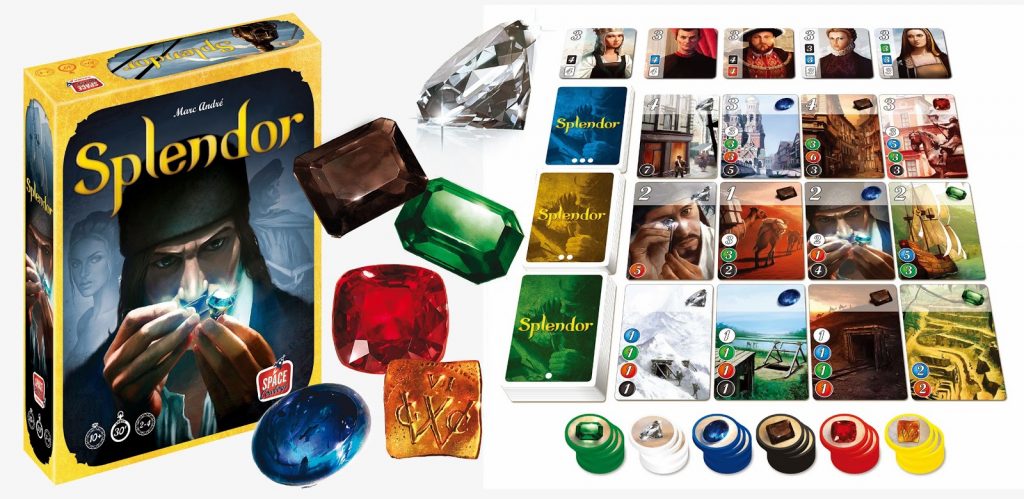
Splendor
2-4 Players ⬢ Card game ⬢ Great art ⬢ Low-level competitive ⬢ Difficult to get ‘locked out’ of the game
What: Splendor is a pure but simple engine-builder game about gathering and trading gemstones. There is no money mechanic, and no trading between players: you pick what you want, and provided you have any specific prerequisites, you acquire it. You gradually build up an collection of gemstones which allow you to impress nobles or to acquire even greater assets, until you have enough points to win.
How it brings good cheer: A very pretty game that highlights one of the purest joys in gaming: seeing your strategy work. Splendor takes engine-building down to its core in a way that all but ensures everyone will be able to create an engine.
Whilst it is competitive, each player will feel like they are making progress and (provided you have no sore losers) finish the game feeling like they have accomplished something.
Each turn is very quick, keeping the game flowing, and without any elimination mechanics everyone will always have something to do (typically thinking about their next turn.)
Serving suggestion: Again, this is a ‘read the room’ game: if your group is up for a bit more thought, then Splendor scratches that itch quite nicely. It isn’t the most socially involving game, as less experienced players will need to spend time thinking about their decisions.

Hey, That’s My Fish!
2-4 Players ⬢ Board game app ⬢ Quick to teach and play ⬢ Hidden depth
What: Slide your penguins around to collect fish and block other penguins! Get the most fish, whether by greedily grabbing or bullishly blocking.
How it brings good cheer: It’s frosty fun and super easy to learn, but has a real depth of strategy in its simple moves. Every move shrinks the board, so it’s quick and visually appealing.
Serving suggestion: Play 3-4 players for fun chaos, or play 2 players for a tight zero-sum strategy game. This is the rare board game where playing on a tablet is kind of better than the real thing, saving time on setup, as well as offering alternate board setups!
[adinserter block=”1″]
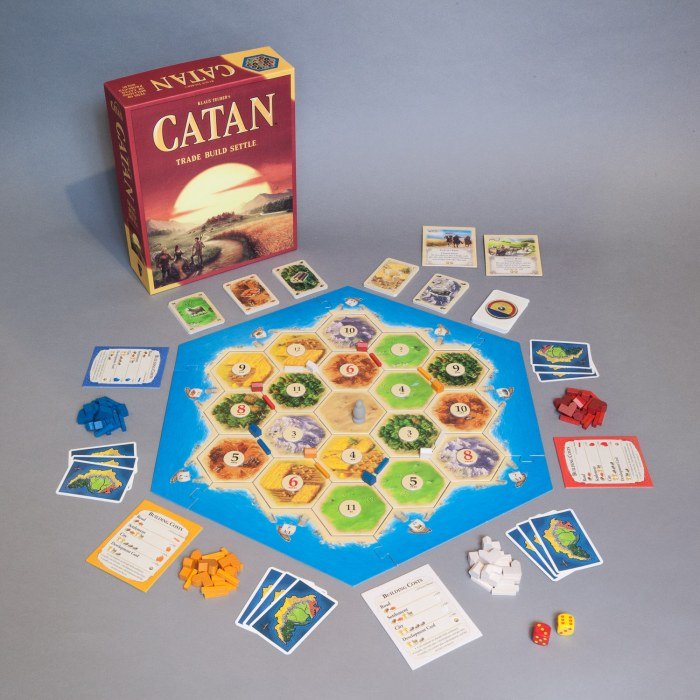
Settlers of Catan
3-4 Players ⬢ Board game ⬢ A classic ⬢ Gateway game ⬢ Good expansion options ⬢ Competitive ⬢ Has hexagons
What: Settlers of Catan is often considered the gateway game for people transferring from ‘traditional games’ (e.g. Monopoly, Scrabble) to modern board games. It keeps a lot of traditional ideas (luck of the dice, trading, building) but also improves upon several ideas (player interaction, building placement, and – most importantly – hexagons).
How it brings good cheer: Catan finds its way onto this list as a game my family thoroughly enjoys. Seeing their understanding of strategy grow, and even coming up with some new tactics by themselves more recently, has been thoroughly rewarding for me. Catan is a longer-term investment, but if your group is interested in trying some more ‘proper’ board games, it’s hard to go wrong with Catan.
Serving suggestion: Test the waters with some simpler family games on this list first, and if your group is interested in seeing what more serious games can offer, suggest Catan. Assuming your group is not familiar with the wider spectrum of board games, it might take a couple of plays for Catan to ‘click’ with them (my family needed a second play before they were comfortable with the rules). Be patient, because if they enjoy Catan it’s only a matter of time before you can break out your heavy Eurogames!
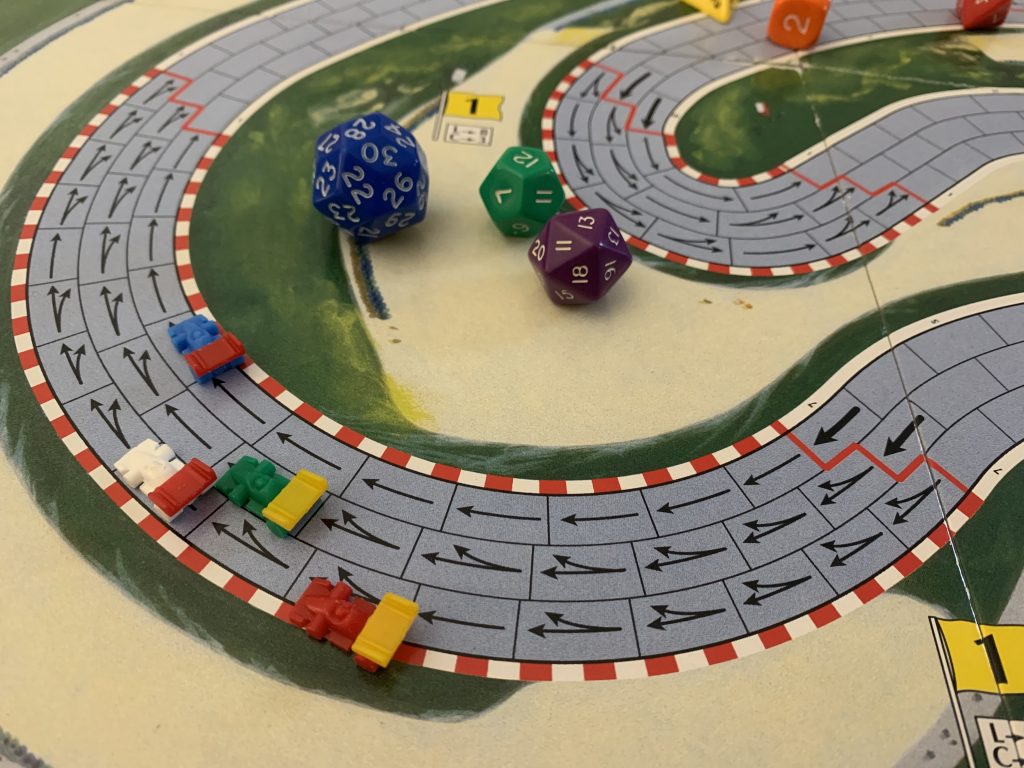
Formula D
3-10 Players ⬢ Competitive ⬢ Test your luck ⬢ Roll to move ⬢ Scalable
What: A fast-paced roll and move racing game where players drive around a race track. Each turn, players need to choose whether to stay in gear, go up, or go down a gear. The current gear a player is in determines which of the six different dice you roll for movement (ranging from a d4 in first gear to a ridiculous d30 in sixth).
How it brings good cheer: Due to its ‘roll and move’ mechanic, Formula D is very approachable to those who have only played more mainstream board games, nearly all of which incorporate ‘roll and move’ to some extent. The additions of different dice choices, resources to spend throughout the race, and risk-taking create a game which is both engaging for younger audiences and subtly complex enough for older generations.
Serving suggestion: For a speedier game with a tad more excitement, I add some realtime rules. You are driving a racecar, so you need to make choices quickly!
- You only have 6 seconds to choose your gear.
- Once you have rolled, you need to begin moving your car: no moving back to retry your route. There are no time travel mechanics in this game!
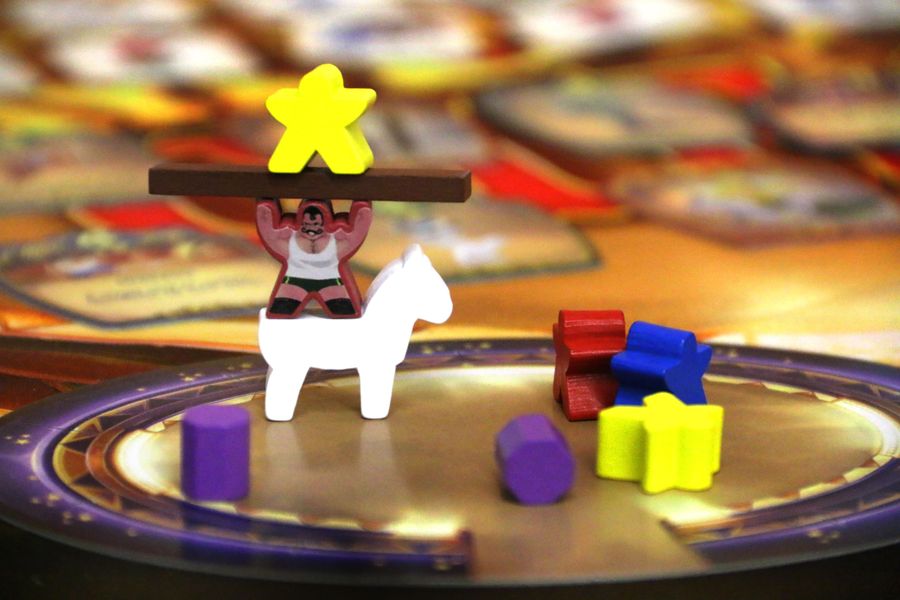
Meeple Circus
2-5 Players ⬢ Board game ⬢ Balance & dexterity ⬢ Putting on a show
What: Pile up and balance meeples, elephants, horses and balls to put on a circus show, accompanied by silly music!
How it brings good cheer: The core mechanic of the game is a lot of fun. Each round ramps up what you’re doing with new pieces, so you get some practice in before the big show in the final round. Also, someone will definitely knock over their entire structure during the game and then rush to rebuild!
Serving suggestion: Play it on a sturdy table and prepare for laughs!
[adinserter block=”1″]
Showing off your artistic flair (or not)
These family games require you to mark whiteboards with pens. Whether those marks can be interpreted doesn’t really matter:
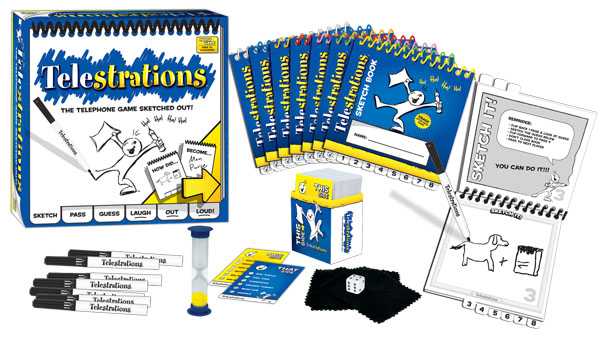
Telestrations
3-8 Players ⬢ Drawing ⬢ Easy to explain ⬢ Quick to play ⬢ No art skills needed
What: Telestrations is Chinese whispers with pictures instead of words.
How it brings good cheer: The whole room will be filled with snorts, giggles and possibly some embarrassed sighs as you all see how a drawing of a balloon gets transformed into snake (or probably something a lot ruder).
Serving suggestion: Once you’re comfortable with the concept, leave the pre-packaged words and go off the beaten track; come up with your own words to draw.
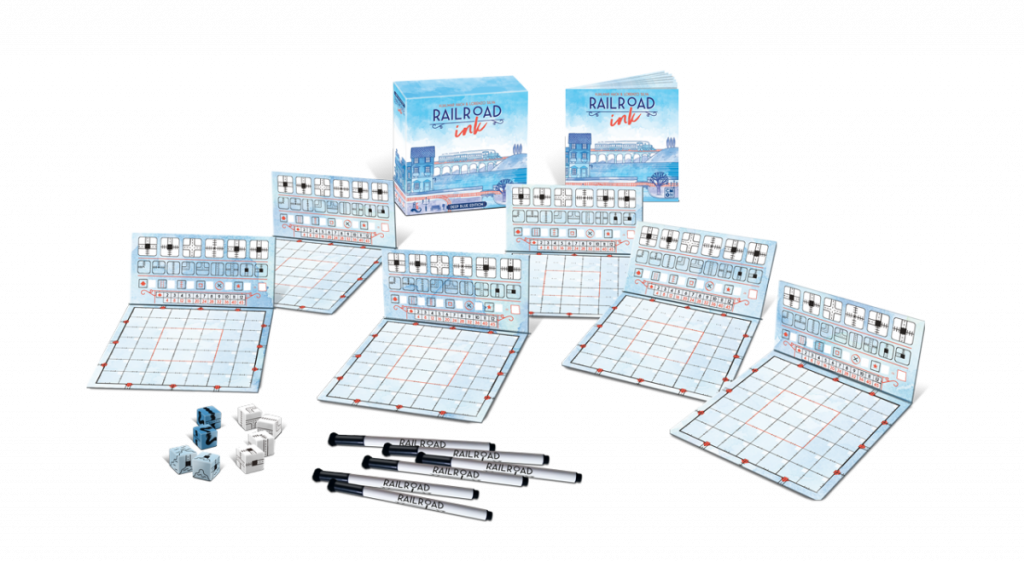
Railroad Ink
1-6 Players ⬢ Small Size ⬢ Low-level competitive ⬢ Play at your own pace ⬢ Train-themed!
What: In this award-winning game, you and up to five family members take on the challenge of planning out a transport network. Each round, you’ll roll special dice to determine the shapes of railway track, road and intersection available, then spend a minute or so drawing them onto your own mini whiteboards. At the end, layouts are scored according to the number of stations and roads connected, with players losing points for dead-end routes.
How it brings good cheer: Although you’re competing in the sense that someone’s network will receive the highest score at the end of the game, players cannot interact with each other’s boards. That means that if you get stuck with sections of railway you can’t use, it’s your own fault for trying to recreate the Underground instead of connecting the stations like a normal person. Plus, everyone’s playing from the same dice rolls; you can’t say fairer than that!
Serving suggestion: Hand out the little boards and erasable markers, and enjoy entire minutes of peace and goodwill as everybody beavers away drawing out their tracks. The game is simple enough to appeal to puzzlers and train aficionados alike.
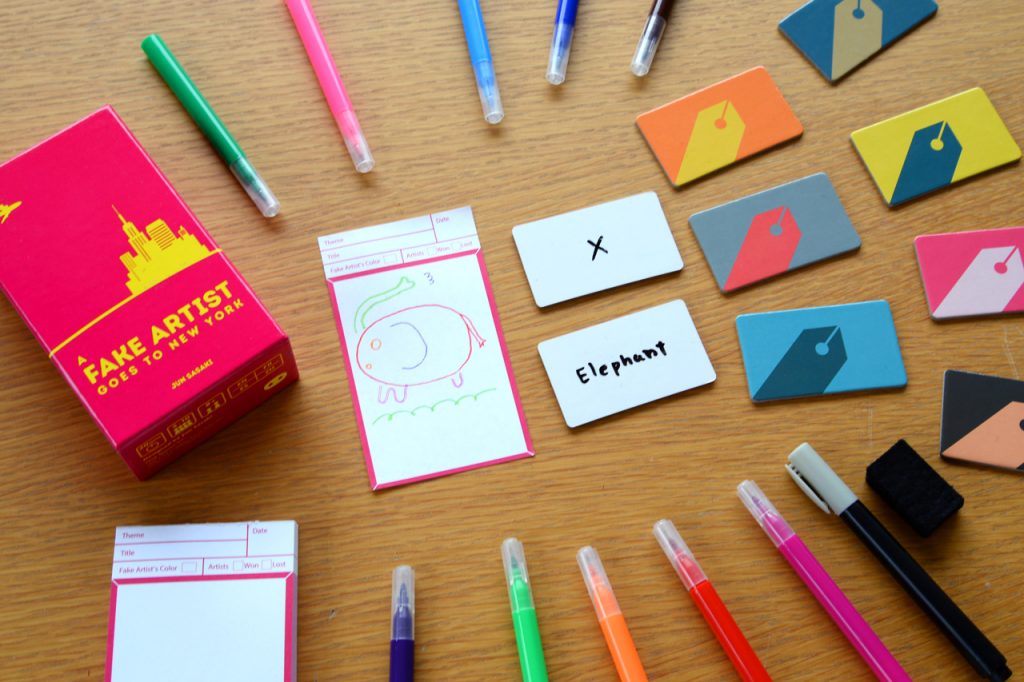
A Fake Artist Goes to New York
5-10 Players ⬢ Hidden role game ⬢ Cooperative ⬢ Drawing game
What: Hidden role games have been gaining fans thanks to the explosive popularity of Among Us. In this artistic take on the genre, everyone is given the same word to draw, except for one person, who is given a blank card. They are the ‘fake artist’. Everyone takes turns until they’ve each contributed two lines, and then the group steps back to admire the drawing. The players vote on who the fake artist is, but if the fake figured out the word, they can still win!
How it brings good cheer: The tension in the game comes from having to draw enough that people don’t mistake you for the fake artist, without giving away enough information for the imposter to guess the prompt.
Like all good drawing games, drawing skill isn’t strictly necessary as you’re only contributing one line. Plus “I’m bad at drawing” is a good bluff when you’re the fake artist.
Serving suggestion: If you have people in your group who know Among Us, just swap the words ‘fake artist’ in the rule description for ‘imposter’ and they’ll probably pick it up even faster.
If you enjoyed this article, checkout our Halloween videogame edition: Overspooked.
[adinserter block=”1″]

